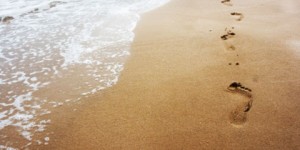How to look after your legs on holiday
Got the travel bug?
Here’s how to look after your legs while on holiday.
Congratulations, you’ve just booked your next holiday!
I don’t know about you guys, but until I am poolside (cocktail in hand, shirtless male by my side, good book in hand), I spend the weeks leading up to my forthcoming trip thinking about everything and anything holiday related.
The things that usually run through my mind include; packing, budgeting, itinery planning, sight-seeing, bikini body preparing, Mediterranean love stories, passports (and/or how many times it took me to take a passport photo without smiling), plane trips, hotels/hostels, transport, hats, vaccinations, wine, weather appropriate clothing, shower thongs, toiletries, do all hotels have hairdryers, how many pairs of undies do I need, at what point do the number of suitcases exceed necessity, apparently they speak German in Austria, how do I pack for trans-seasonal trips, will my seat actually recline this time and do I buy duty free goods before or after my trip?
Ugh, I’m exhausted just thinking about the amount of thinking I do.
Whether or not you share the same ridiculous thoughts re: forthcoming trips, I ask how much emphasis you place upon the very things that allow you to partake in such wonderful holidays…your legs!
Someone once told me that good shoes take you good places. Well good shoes need good feet and good feet need good legs. So don’t leave them behind!
Let’s start with the plane trip. If you are lucky enough to be travelling to an overseas destination, this is of particular importance to you. Unfortunately, swelling is an unfortunate side effect of long plane trips. Try to reduce the ‘cankle’ as much as possible by following some of these tips:
- Compression: wearing compression garments while flying can help with fluid drainage from your legs and help to decrease the amount of swelling which occurs in your lower limbs. When you move around normally, contraction of muscles in your legs helps to push blood and fluid back towards the heart and lungs. Due to the sedentary nature of flying, compression can help to assist this function. Compression stockings can also help to decrease the risk of deep vein thrombosis.
- To assist fluid removal try these exercises while flying:
- ANKLE PUMPS: these can easily be performed while sitting in your seat. Aim to do them at least 2 times per hour while you are awake. Using one foot at a time, point your toes up towards the roof and then to the floor. As a guide, try doing 2 sets of 10, on each foot.
- WALKING: even though it can be inconvenient if you have to climb over others/wait for the hostess to pass, try to get up out of your seat as often as possible. Go for a walk up and down the aisle, or if this is not possible take some steps on the spot to get your legs moving. If you wanted to really live on the edge/draw attention to yourself, you could do some squats.
- STRETCHING: this will not only make your muscles happy, but it will assist with fluid drainage in your legs. If you can find the room to move, stretch your legs, arms and neck. Your body will thank you for it afterwards!
- Hydration: It is important to stay hydrated while flying (and while on holiday in general). Air in the cabin is dry, which increases your risk of dehydration and the risk of sickness. Normally the air we breathe is humid. This allows our air passages to stay moist, trapping any particles that may be harmful to the body or cause illness. Staying well hydrated and maintaining healthy levels of electrolytes will also decrease the chance of blood volume loss due to dehydration and therefore decrease the amount of oedema (swelling) whilst at altitude.
- To assist fluid removal try these exercises while flying:
Once your legs have recovered from a long flight, time to get walking! If your holiday includes a lot of sight seeing and travel by foot, it is important that you pack a good, supportive and comfortable pair of shoes. For most people, the most supportive pair of shoes they own is their runners. However for those like me, who frequently forego comfort for style and don’t want to rock the classic American tourist ‘jeans and runners’ or ‘junners’ style, never fear! This does not mean you have to wear your runners everywhere, or pretend that you are exercising merely as an excuse to wear your joggers and gym gear when cruising the streets of Paris (guilty). However I do recommend that you are conscious of the types of shoes you are packing.
These simple tips may help when choosing which shoes to pack (this is particularly relevant for females):
- A solid, supportive shoe should not collapse at the sides or back when compressed. You should not be able to fold it in half.
- Your shoe should have a firm heel.
- The shoe should have some arch support, rather than a flimsy, thin insert.
- If possible, a strap around the ankle can help to hold your foot in the shoe so that your toes do not have to do all the work.
- Be wary of the width of your shoe, you want your foot to sit nice and snug in the shoe. You do not want it to be too sloppy or on the other hand, too tight. It is important to find that nice, happy medium.
Unfortunately this means the trusty ol’ pair of thongs is just not going to cut it on days that require a lot of walking. Of course they are necessary to pack to wear to the beach, pool and shower (purely dependent on your accommodation’s hygiene rating). My one recommendation is that you consider the type of shoe you decide to wear on days full of activities that involve more movement than from the pool to the bar and back again.
Ladies (and gents, this includes you too) if you are looking for gorgeous, comfortable and supportive footwear, that is not old fashioned or boring, I strongly suggest you take a look at Bared Footwear. Their range of shoes from flats to boots and heels are gorgeous. The range is designed by podiatrists to support your feet correctly.
You can check out the Bared range at https://bared.com.au/store/products/Womens/flats
If this is simply not your style/out of your price range, I strongly recommend you pack a decent pair of walking shoes for big days on the go! Your feet will thank you for it later. Enjoy your next holiday!
If you have any questions regarding footwear, ask your osteopath today!
Nicole Tuminello, Osteopath.

